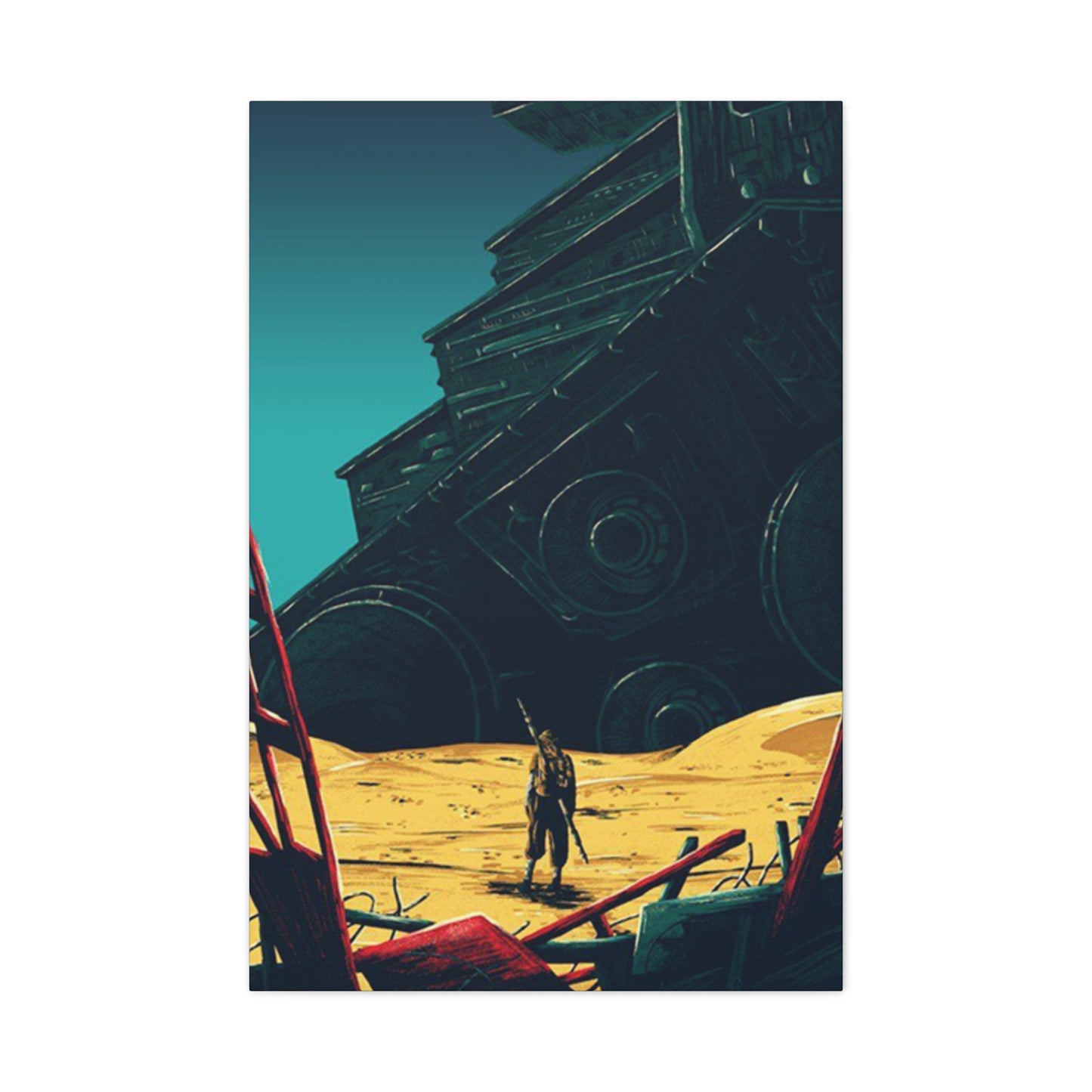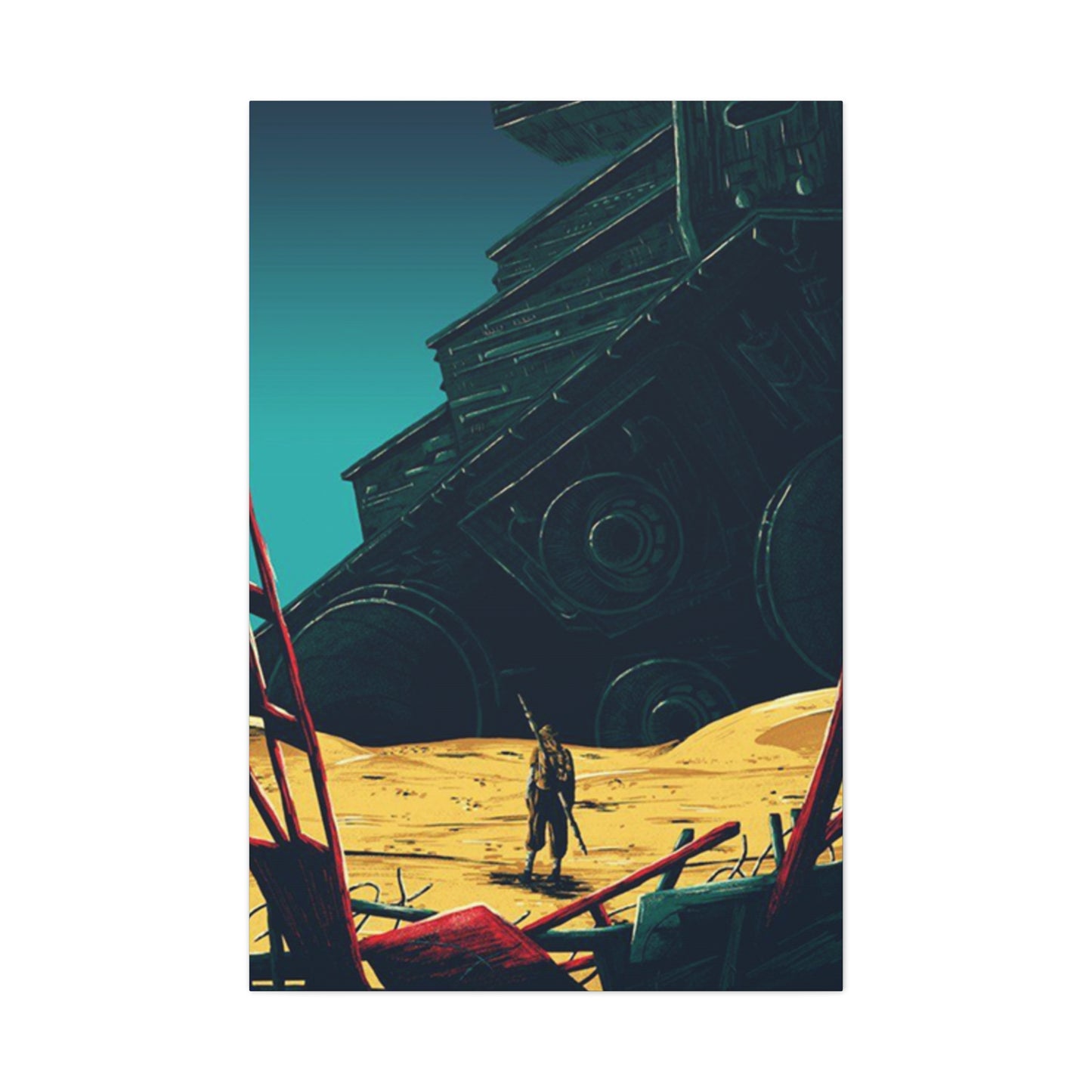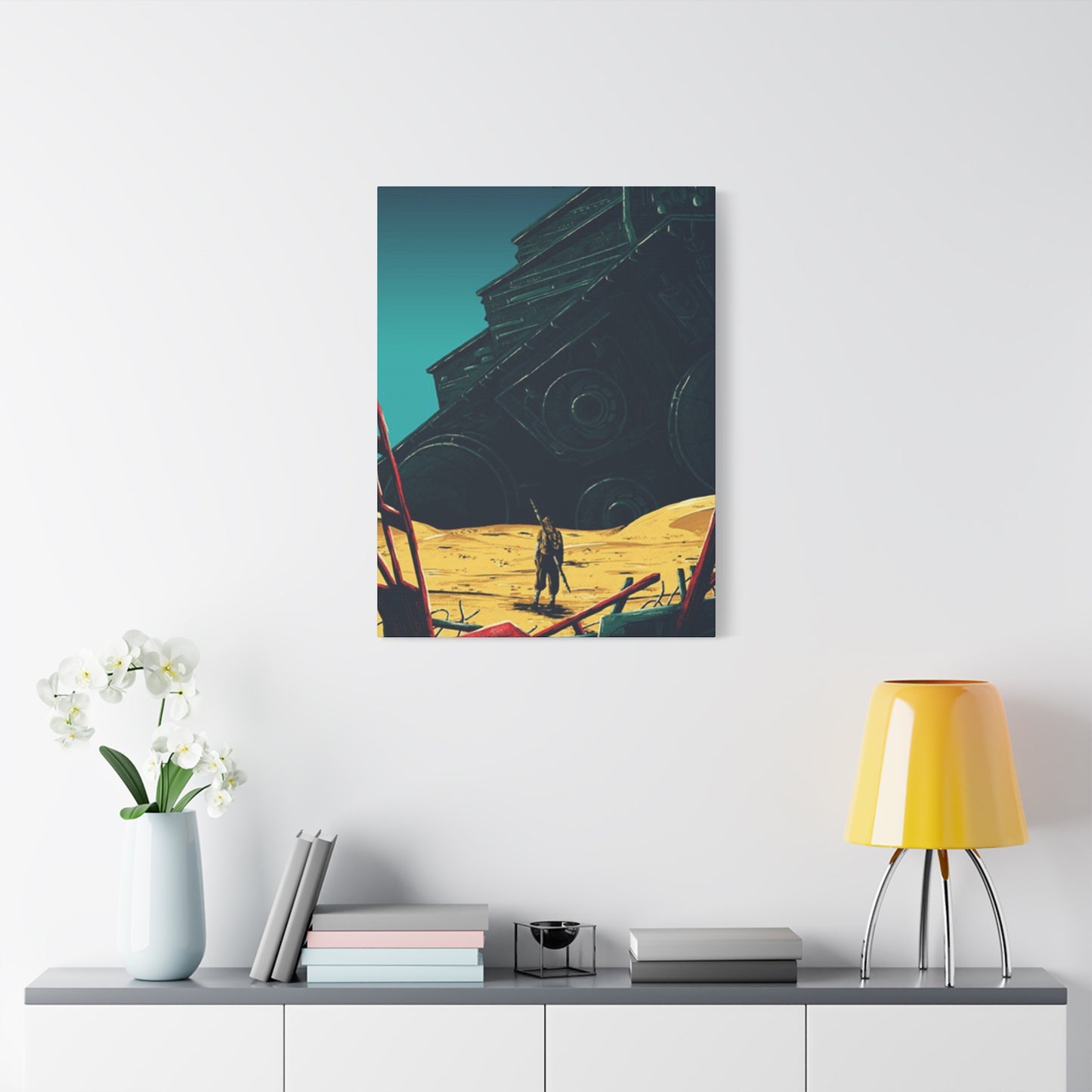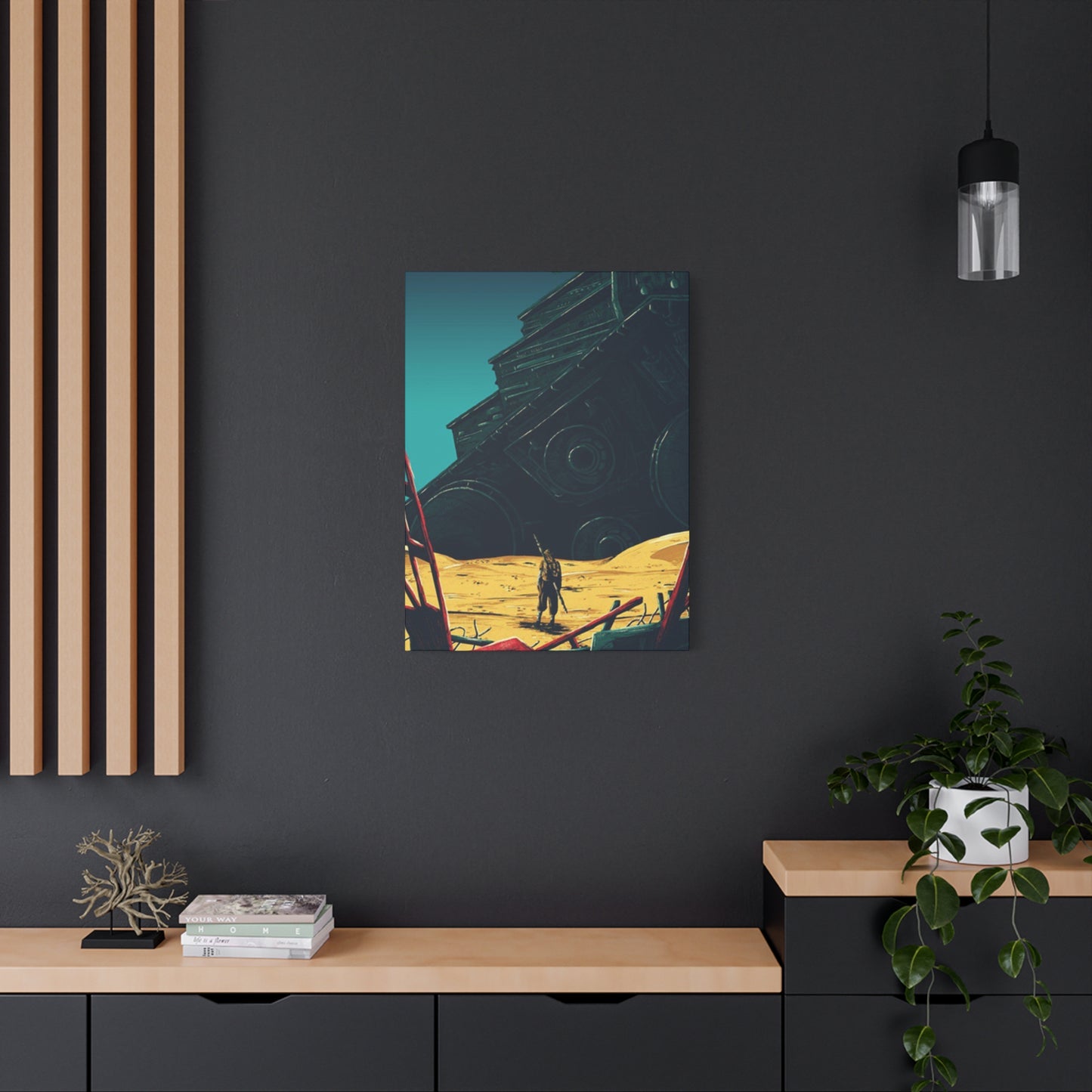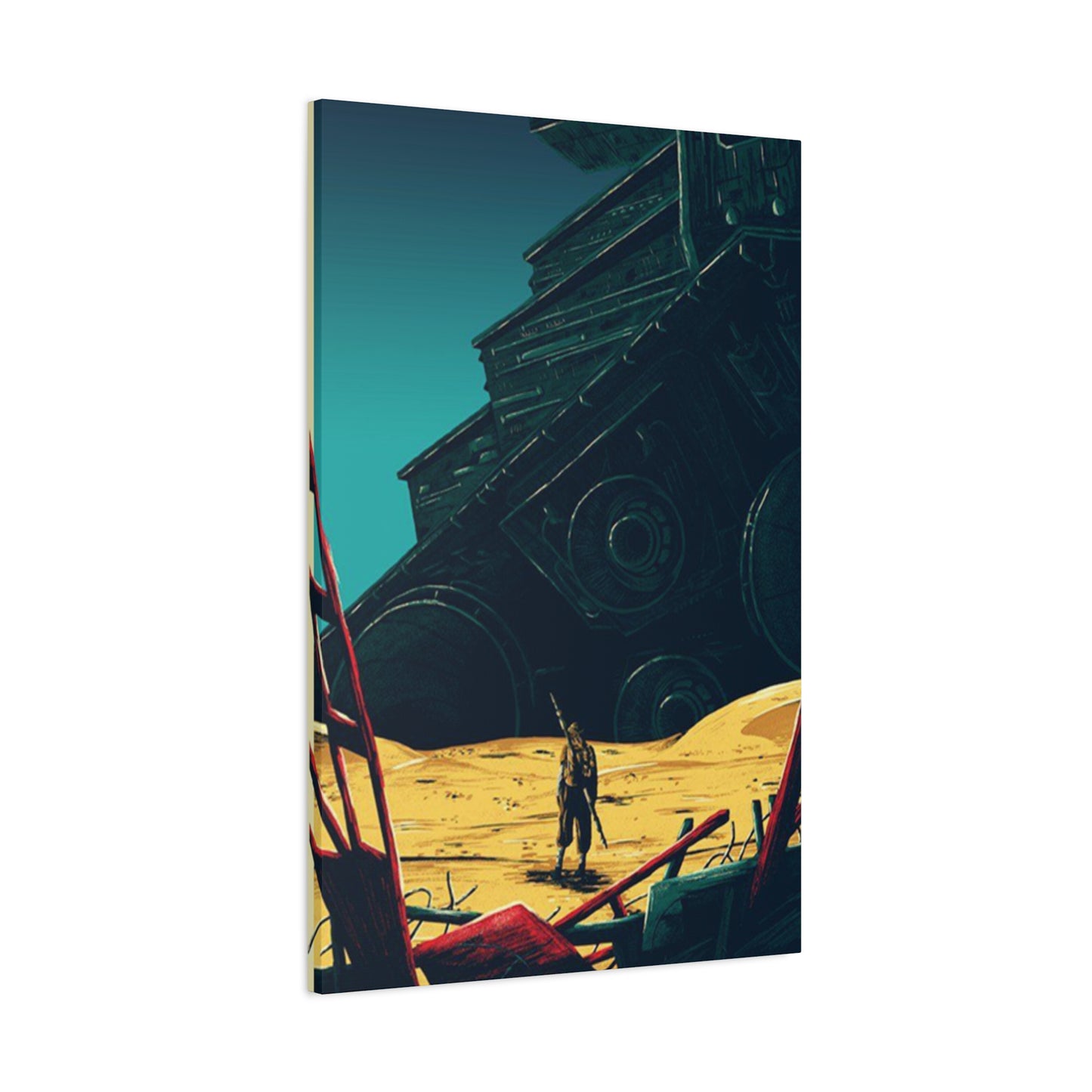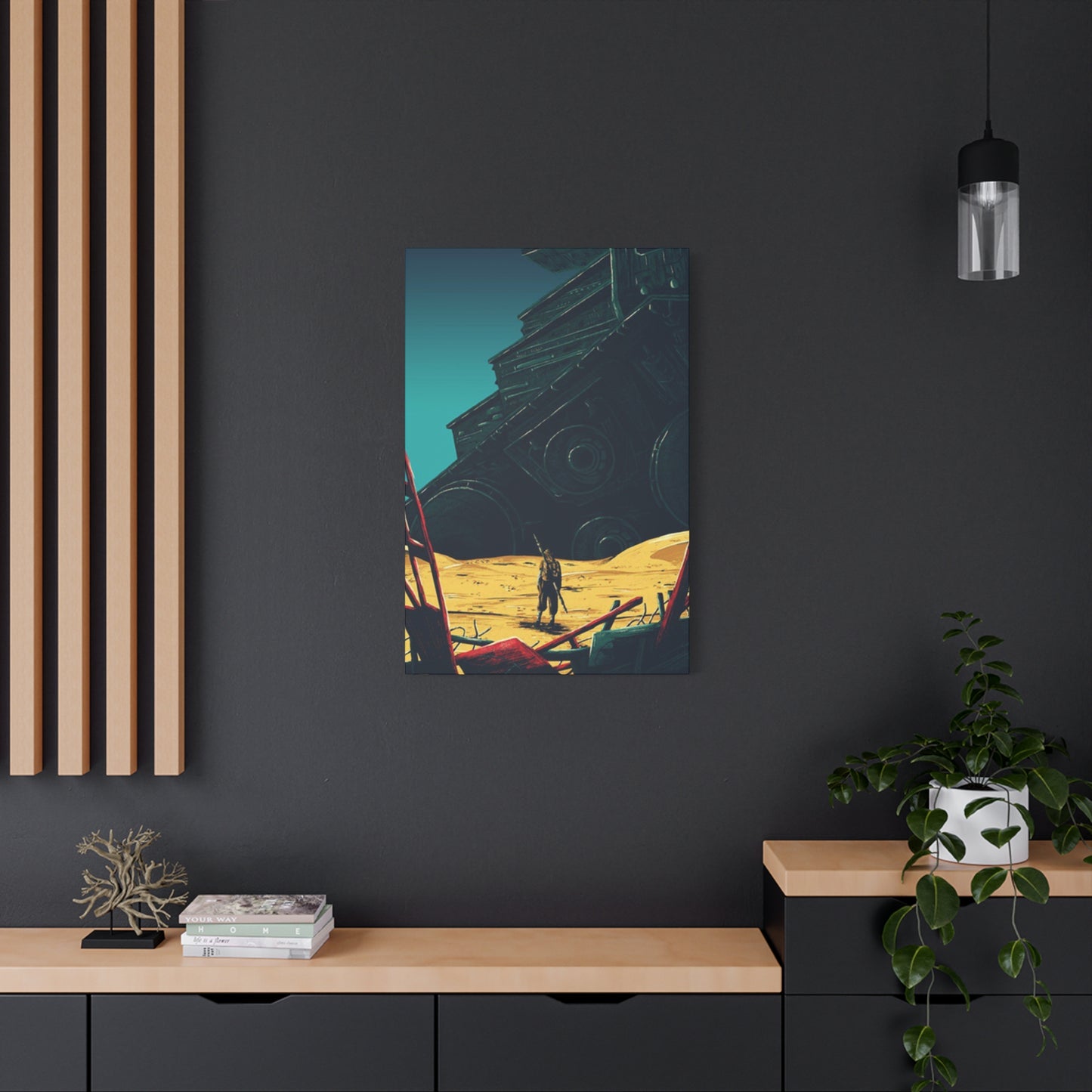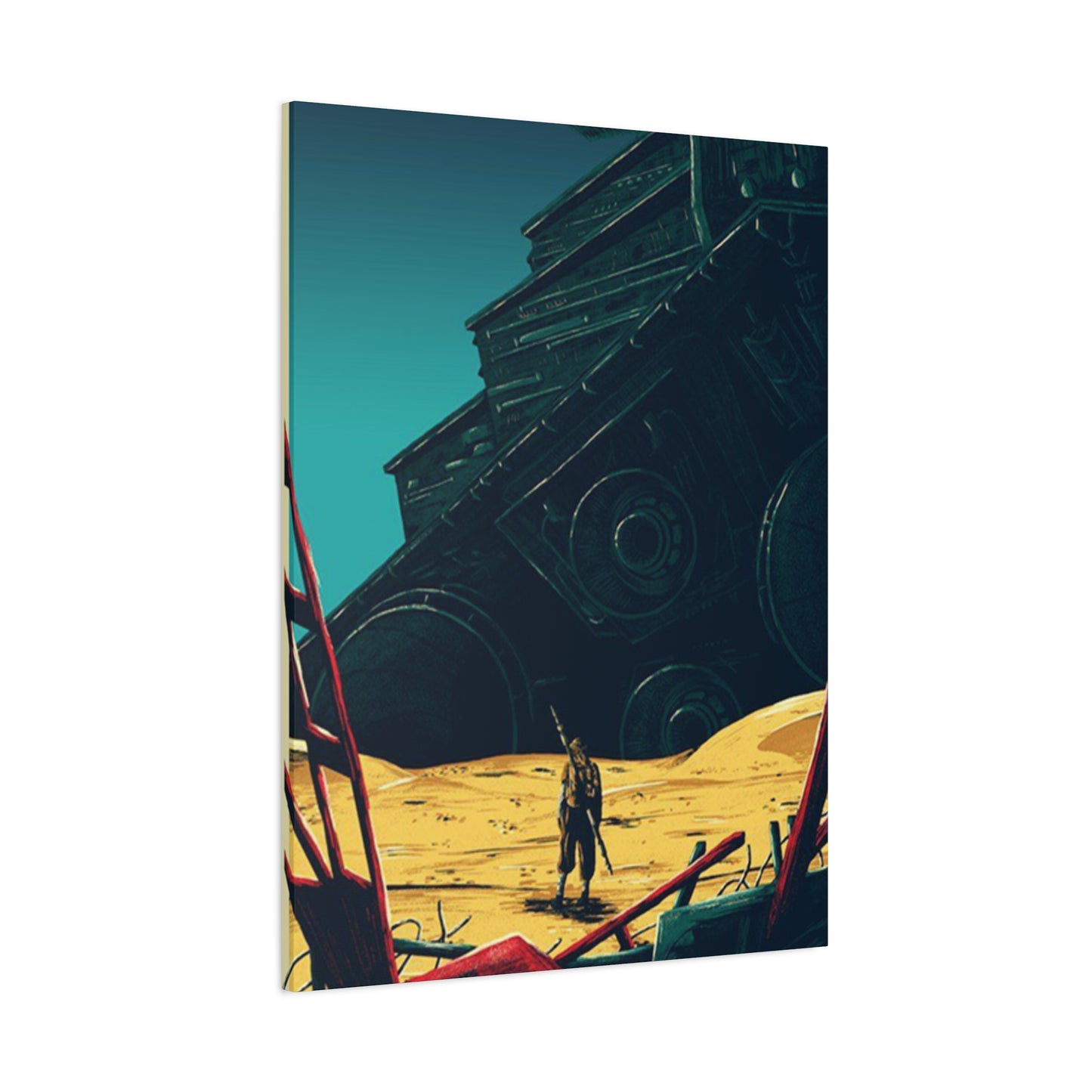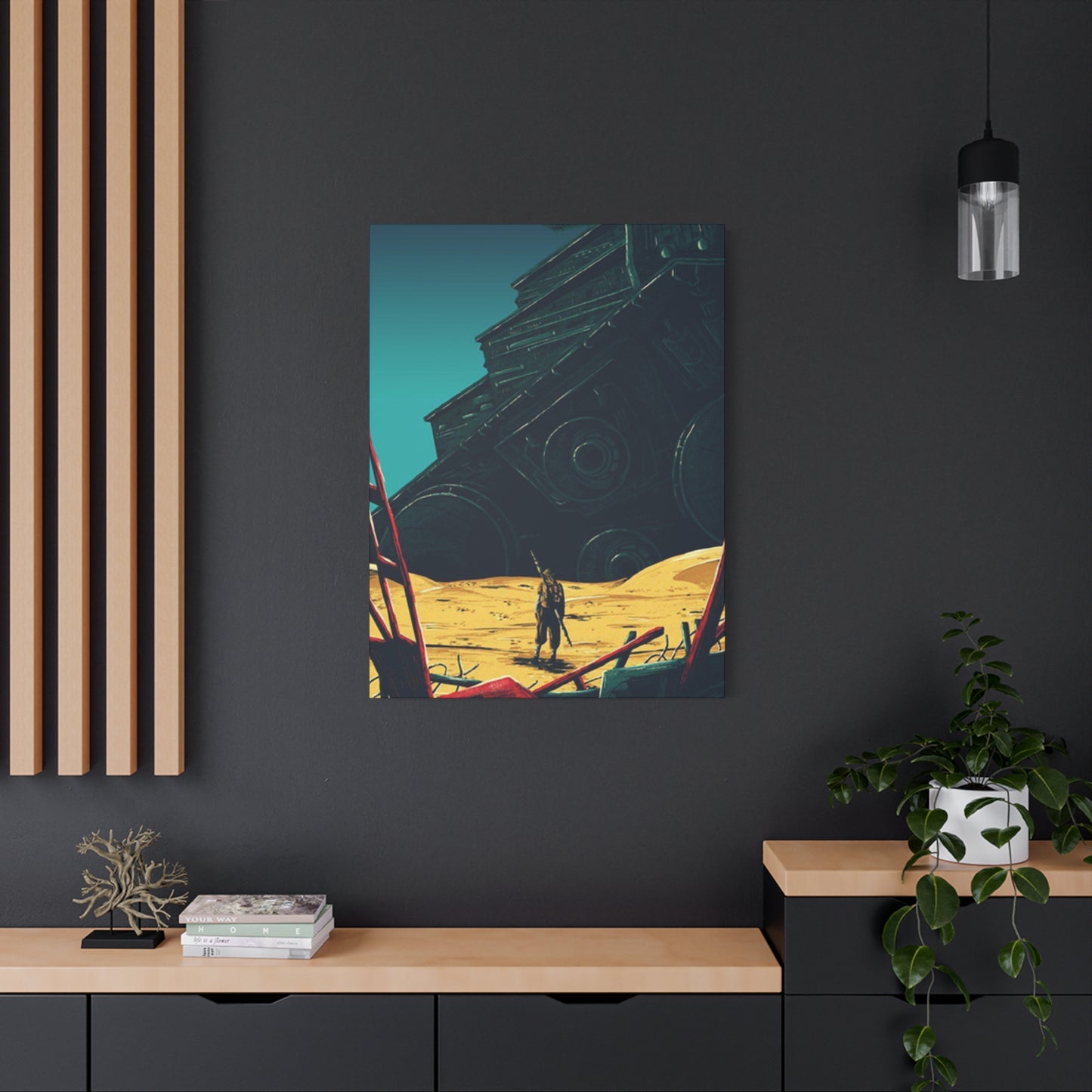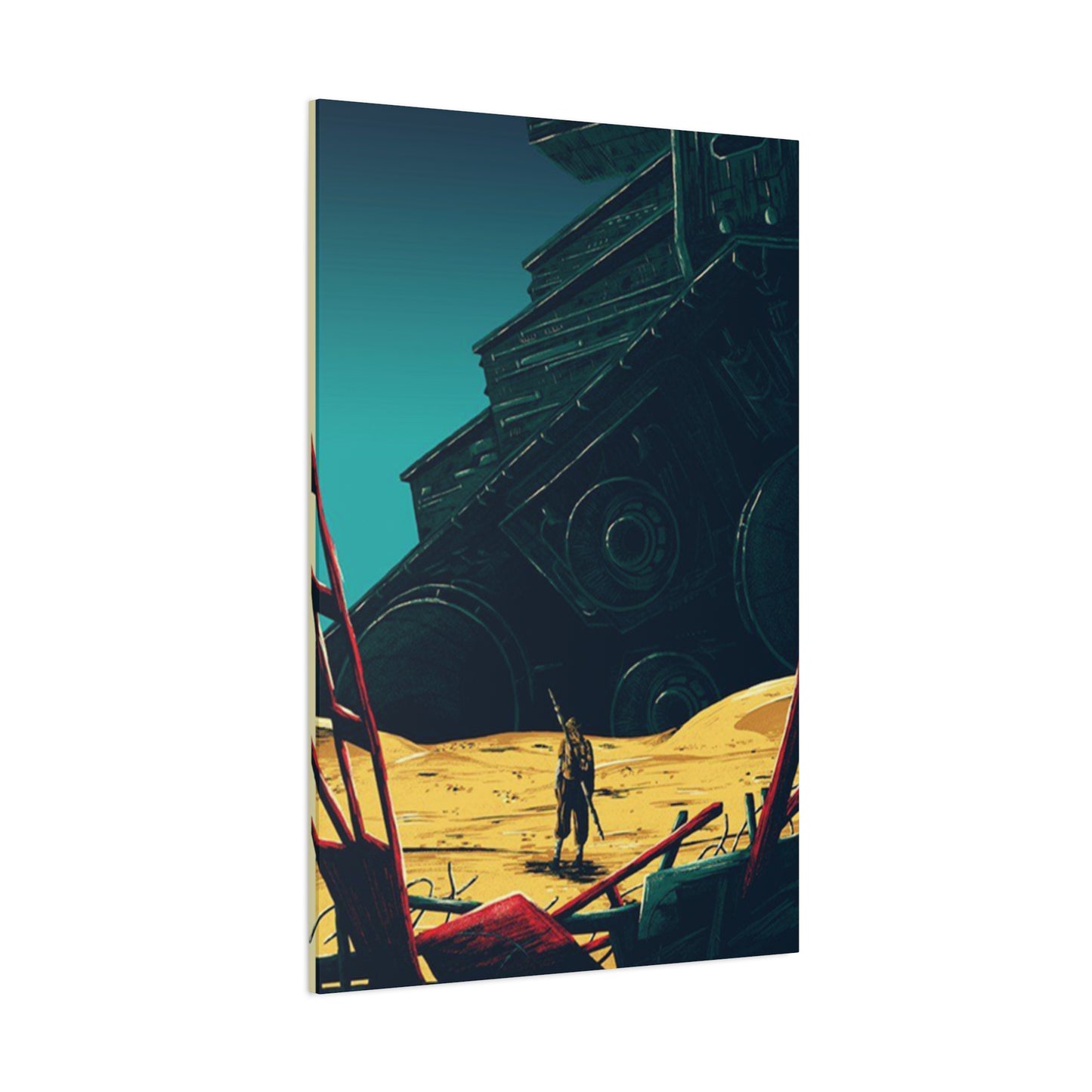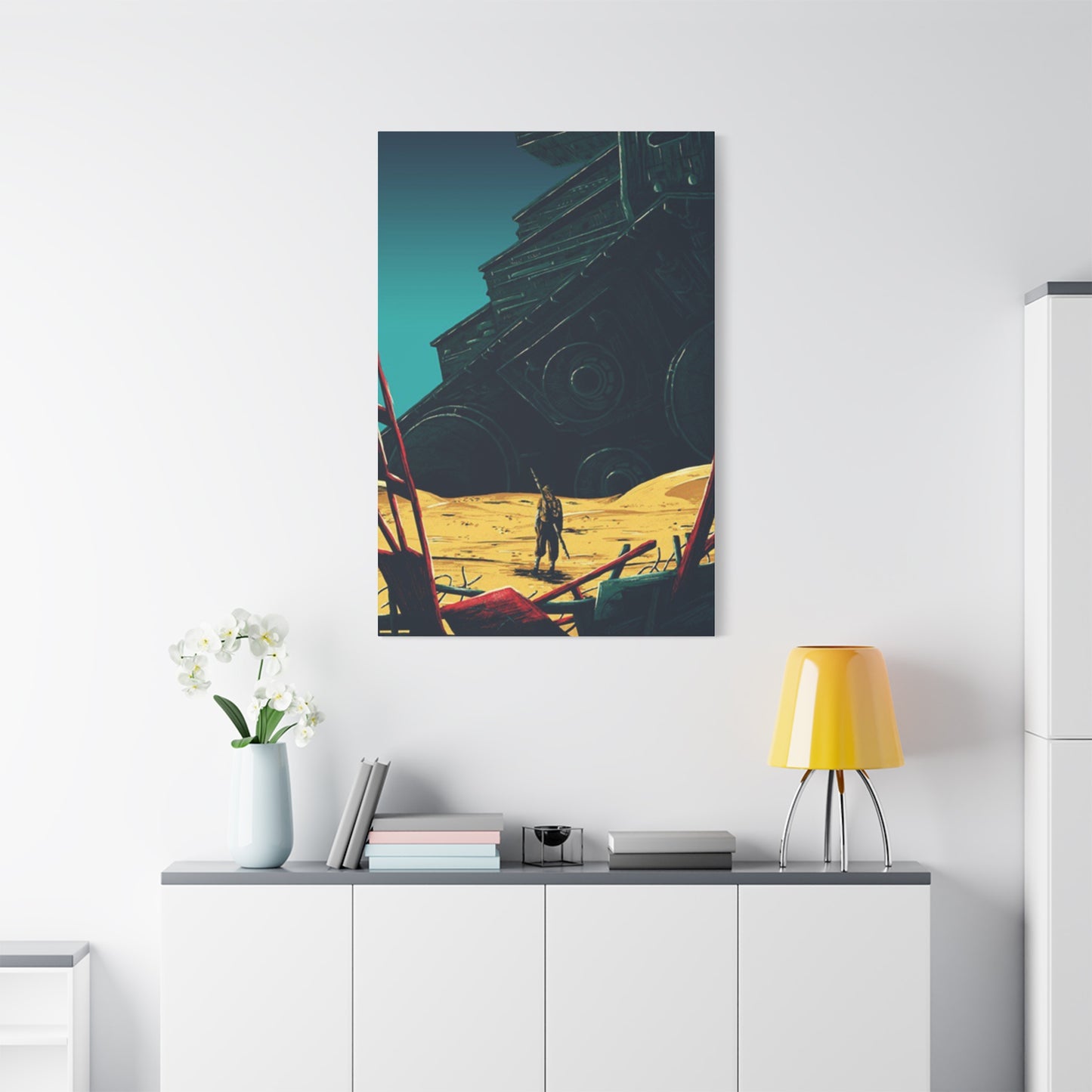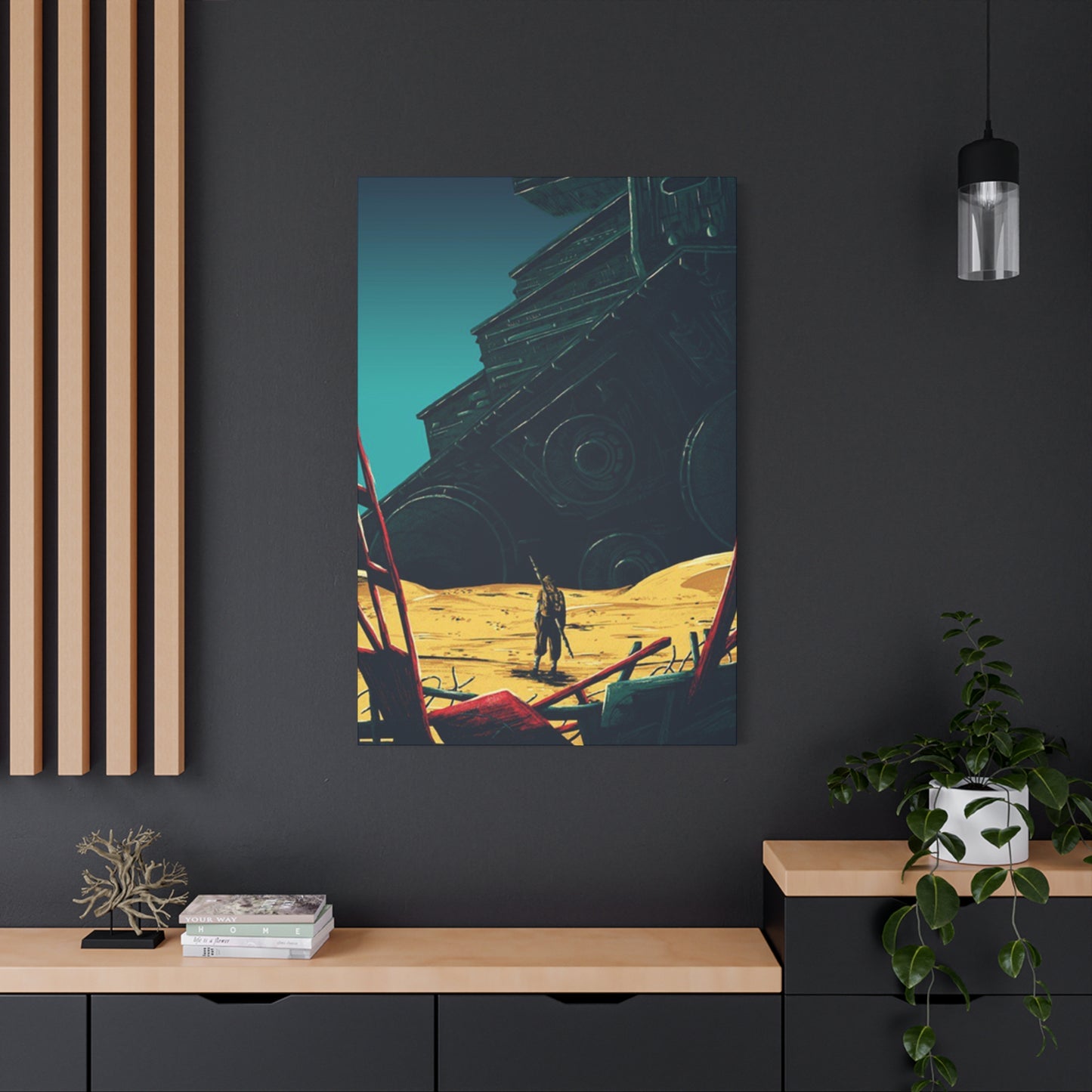The Artistic Legacy of Drew Struzan: From Classic Star Wars Posters Wall art to The Force Awakens
The resurgence of the Star Wars saga brought with it a fresh wave of creative expression that captured the hearts of longtime enthusiasts and newcomers alike. The seventh installment in this legendary franchise introduced audiences to compelling new characters, breathtaking visual storytelling, and a continuation of the epic narrative that had defined generations. For those seeking to celebrate this cinematic achievement within their living spaces, decorative artwork inspired by this beloved film offers an exceptional opportunity to merge fandom with interior design.
Whether you're curating a dedicated entertainment area, refreshing your living room aesthetic, or seeking the perfect gift for a devoted fan, the variety of artistic interpretations available today provides endless possibilities. From dramatic character portraits to minimalist design concepts, from vintage-inspired compositions to ultra-modern digital artworks, the selection spans every imaginable style preference and budgetary consideration. This expansive exploration delves into every aspect of selecting, displaying, and enjoying wall decor inspired by one of the most significant entries in cinematic history.
Epic Force Awakens Wall Art for Star Wars Fans
Devotees of the galaxy far, far away understand that their passion extends far beyond simply watching films. It becomes part of their identity, influencing how they express themselves through their personal spaces. Artwork celebrating the seventh chapter of the Skywalker saga represents more than mere decoration; it serves as a daily reminder of the themes that resonate so deeply with audiences worldwide: courage, redemption, friendship, and the eternal struggle between light and darkness.
The most impactful pieces capture the essence of what made this particular installment so special. They freeze moments of intensity, showcase the design brilliance behind new characters and vehicles, or reimagine familiar iconography through fresh artistic lenses. A truly epic piece might feature the climactic lightsaber duel in the snowy forest, the mysterious masked figure standing amid the wreckage of an Imperial Star Destroyer, or the moment when a scavenger from a desert planet first ignites a legendary weapon.
Scale plays a crucial role in creating that epic quality. Large-format pieces command attention and establish themselves as focal points within any room. When you select artwork that spans several feet across your wall, you're making a bold statement about your dedication to the franchise and your appreciation for visual storytelling. These substantial pieces work particularly well in spaces with high ceilings or expansive wall areas that might otherwise feel empty or underutilized.
Material selection contributes significantly to the epic nature of your chosen artwork. Canvas prints offer a gallery-quality finish that brings depth and texture to images, creating shadows and highlights that change depending on lighting conditions throughout the day. Metal prints provide a contemporary, high-gloss appearance that makes colors pop with unusual intensity, perfect for modern interiors with clean lines and minimalist furnishings. Wood-mounted options deliver a rustic, organic feel that can soften the high-tech aesthetic often associated with science fiction.
Color schemes in epic artwork tend toward either the dramatically saturated or the moodily restrained. Some pieces burst with the reds of lightsaber blades, the blues of hyperspace, and the oranges of desert sunsets on Jakku. Others embrace a limited palette, using shadows and silhouettes to create atmosphere and mystery. Both approaches can be equally powerful, but they serve different design purposes. Vibrant pieces energize spaces and draw the eye immediately, while restrained compositions invite closer inspection and contemplation.
Limited edition releases and artist collaborations represent the pinnacle of epic wall art for serious collectors. These exclusive pieces often feature unique interpretations, alternative color schemes, or special finishing techniques not available in standard production runs. Numbered prints, artist signatures, and certificates of authenticity transform these items from simple decorations into investment-grade collectibles that may appreciate in value over time while providing daily enjoyment.
The emotional impact of epic artwork cannot be overstated. When you walk into a room and immediately see a powerful image from a film that holds personal significance, it triggers positive associations and memories. Perhaps you saw the movie during a particularly meaningful time in your life, or you share the fandom with someone important to you. That artwork becomes a touchstone, connecting your present moment with cherished experiences and relationships.
Installation considerations for epic-scale pieces require careful planning. Weight becomes a factor with larger items, necessitating appropriate wall anchors and hanging hardware. Professional installation might be worth considering for particularly valuable or heavy pieces. Positioning matters tremendously as well; artwork placed at the correct height and in relationship to surrounding furniture creates a cohesive design flow, while poorly placed pieces can feel disconnected from the rest of the room.
Lighting design elevates epic wall art from impressive to breathtaking. Dedicated picture lights, track lighting, or even LED strip lighting can be strategically positioned to highlight your artwork during evening hours. Adjustable spotlights allow you to direct attention exactly where you want it, creating drama and emphasizing particular elements within the composition. Smart lighting systems enable you to change the mood by adjusting color temperature and intensity according to the time of day or occasion.
Best The Force Awakens Posters to Elevate Your Space
Selecting superior poster designs requires understanding what separates merely adequate reproductions from truly exceptional artistic statements. The finest examples transcend their promotional origins to become standalone works of art that would command attention regardless of their subject matter. They demonstrate compositional excellence, color harmony, and a visual impact that remains compelling even after years of daily viewing.
Official theatrical release posters possess a certain authenticity and historical significance that appeals to purists and collectors. These designs underwent extensive creative development, often going through dozens of iterations before final approval. They were created specifically to capture the essence of the film and attract audiences, distilling hours of footage into a single, powerful image. Original release posters, particularly international variants featuring different artwork or typography, have become highly sought after in the collector market.
Alternative movie poster artists have revolutionized how fans engage with film imagery. These talented creators offer fresh perspectives on familiar material, applying diverse artistic styles ranging from art deco to abstract expressionism. Some employ minimalist approaches that reduce complex narratives to essential visual elements, while others embrace maximalist compositions packed with intricate details that reward extended viewing. The best of these alternatives complement rather than compete with official imagery, expanding the visual language associated with the film.
Character-focused posters allow fans to celebrate their favorite personalities from the story. A striking portrait of the conflicted dark side warrior, complete with that distinctive crossguard lightsaber, brings intensity and drama to any wall. The determined scavenger who discovers her connection to the Force makes for inspiring imagery that speaks to themes of self-discovery and hidden potential. The veteran pilot whose loyalty and courage define him, or the reformed soldier who finds his conscience, each offers different visual opportunities and emotional resonances.
Scene-specific designs capture particular moments that defined the viewing experience. The first appearance of a beloved Corellian freighter emerging from behind a sand dune. The emotional reunion between siblings separated by time and tragedy. The tension-filled moments before the climactic confrontation. These scene selections allow you to revisit specific narrative beats that held particular significance for you, keeping those memories vivid and accessible.
Typography and graphic design elements distinguish exceptional posters from ordinary ones. The treatment of the title, the arrangement of credits, the integration of taglines, and the overall graphic hierarchy all contribute to visual success. Some designs employ bold, blocky lettering that commands attention, while others use elegant, flowing scripts that suggest adventure and romance. The best designs balance text elements with imagery, ensuring that neither overwhelms the other.
Print quality separates professional-grade products from inferior reproductions. Superior printing techniques preserve fine details, maintain color accuracy, and prevent issues like banding or pixelation. Archival-quality inks resist fading over time, ensuring your investment continues looking fresh for years or even decades. Paper stock matters as well; heavier weights feel more substantial and resist damage, while different finishes, from matte to glossy, affect how the image presents itself under various lighting conditions.
Size selection depends on both available wall space and desired impact. Standard poster dimensions like 24 by 36 inches work well in most residential settings, fitting comfortably above furniture or between architectural features. Larger formats make bolder statements but require careful consideration of viewing distance and surrounding elements. Smaller prints can be grouped in gallery wall arrangements, creating visual interest through thoughtful curation and spacing.
Thematic consistency across multiple posters creates a cohesive collection rather than a random assortment. You might choose to focus exclusively on character portraits, creating a rogues' gallery effect. Alternatively, a series depicting different key moments tells a visual story as viewers move through your space. Color coordination across multiple pieces ensures they work together harmoniously rather than clashing or competing for attention.
Acquisition strategies vary depending on budget and collecting philosophy. Mass-market options provide affordability and accessibility, perfect for those who want to enjoy the imagery without significant financial investment. Mid-range options from specialty retailers offer better quality while remaining reasonably priced. High-end collectibles from established artists or limited-edition releases serve those building serious collections with an eye toward long-term value retention.
Modern Star Wars Decor: The Force Awakens Edition
Contemporary interior design embraces elements from popular culture in ways that would have seemed impossible just a generation ago. What once might have been relegated to basement rec rooms or teenage bedrooms now confidently occupies living rooms, dining areas, and even professional spaces. This cultural shift has enabled fans to express their passions openly while maintaining sophisticated, adult aesthetics that work within modern design philosophies.
The key to successful integration lies in treating franchise-related elements as legitimate art rather than novelty items. When you select pieces based on artistic merit first and subject matter second, you naturally gravitate toward designs that work within contemporary spaces. This means favoring clean compositions over cluttered arrangements, appreciating negative space, and recognizing that restraint often delivers more impact than excess.
Monochromatic approaches exemplify modern sensibilities while maintaining clear connections to beloved source material. Black and white renditions of iconic imagery strip away the associations with typical franchise color schemes, allowing the fundamental design elements to shine. Silhouettes against stark backgrounds create dramatic contrasts that align perfectly with minimalist design principles. These pieces integrate seamlessly into spaces dominated by neutral color palettes while still clearly communicating their origins to those familiar with the material.
Geometric interpretations represent another avenue for modernizing franchise-related decor. Artists working in this mode break down recognizable characters, vehicles, and symbols into fundamental shapes and forms. The result feels contemporary and abstract while remaining identifiable to fans. These pieces work exceptionally well in spaces featuring other geometric elements like patterned textiles, angular furniture, or architectural details with strong linear components.
Material innovation allows traditional imagery to present itself in unexpected ways. Acrylic panels create depth through layering, with different elements printed at various levels to generate three-dimensional effects. Brushed metal brings an industrial edge that suits loft-style spaces and urban environments. Fabric prints on stretched frames provide texture that softens the harder elements often found in modern interiors. Each material choice shifts the emotional tone while maintaining the core visual message.
Color blocking techniques apply modern design principles to franchise imagery. Rather than reproducing scenes exactly as they appeared, artists select limited color palettes and arrange them in bold, decisive ways. A character might be rendered in three or four flat colors against a contrasting background, creating a poster-like quality that references mid-century modern design while remaining clearly contemporary. These pieces bridge the gap between vintage aesthetics and current trends.
Scale and proportion considerations reflect modern design thinking. Oversized single images create focal points that anchor entire rooms, while carefully arranged groupings of smaller pieces generate visual rhythm. The current trend toward gallery walls, which can mix franchise-related pieces with other artwork, family photos, and decorative objects, allows for personalization without overwhelming spaces with a single theme.
Negative space utilization distinguishes thoughtful modern design from cluttered arrangements. Rather than covering every available wall surface, contemporary approaches embrace breathing room. A single striking piece surrounded by empty wall space often makes a stronger statement than multiple items competing for attention. This restraint paradoxically increases impact by allowing each selected piece to command full attention.
Furniture relationships play a crucial role in modern integration. Artwork should relate thoughtfully to the pieces beneath or beside it. A large canvas above a sofa should span roughly two-thirds to three-quarters of the furniture width for proper visual balance. Wall-mounted shelving units can display smaller prints alongside complementary objects, creating curated vignettes that tell visual stories. Console tables beneath artwork provide opportunities for three-dimensional elements that reinforce or contrast with the wall display.
Lighting integration transforms good displays into exceptional ones. Picture lights, floating shelves with built-in illumination, or strategically placed accent lights ensure artwork receives proper emphasis. Modern smart home systems allow for programmable lighting scenes that can shift throughout the day, highlighting different elements or adjusting color temperature to match circadian rhythms.
Seasonal rotation keeps spaces feeling fresh while maximizing your collection. Rather than permanently mounting every piece, consider systems that allow for easy swapping. This approach lets you respond to changing moods, seasons, or simply the desire for visual novelty while preserving pieces that aren't currently displayed.
Top Canvas Prints Inspired by The Force Awakens
Canvas prints occupy a special position in the wall art hierarchy, offering a middle ground between paper posters and original paintings. The textile surface provides depth and texture that paper cannot match, while modern printing technology achieves image quality that rivals traditional artistic techniques. For those seeking gallery-quality presentation without gallery-level pricing, canvas represents an ideal solution.
The wrapped canvas format, where the image continues around the edges of the stretcher frame, eliminates the need for additional framing while creating a three-dimensional object rather than a flat print. This approach works beautifully with modern and contemporary interiors where clean lines and minimal ornamentation reign. Edge wrapping can be handled in different ways: mirror wrapping reflects the outermost edge pixels around the sides, color wrapping extends a solid color from the edges, and gallery wrapping continues the actual image, which works best when the composition allows for some peripheral cropping.
Multi-panel designs, often called triptychs or polyptychs, create visual interest by dividing a single image across several canvases. A panoramic battle scene might stretch across three vertical panels, creating both continuity and distinction. Character portraits can be separated into left, center, and right sections, with slight spacing between canvases adding dimension. These arrangements work particularly well in modern spaces where they echo the modular nature of contemporary furniture and architectural elements.
Canvas texture affects the final appearance significantly. Fine weave canvases with tight thread counts produce smooth surfaces ideal for detailed imagery where crisp lines and small elements matter. Medium weaves offer balanced texture that works across most subject types, providing enough tooth to feel authentic without compromising detail. Heavy weaves create pronounced texture that becomes part of the artistic statement, best suited to images where this painterly quality enhances rather than detracts.
Giclee printing represents the pinnacle of canvas reproduction technology. This museum-quality process uses archival pigment inks that resist fading far better than standard dye-based alternatives. Color gamut in giclee prints exceeds what most printing methods achieve, capturing subtle gradations and maintaining saturation in deep shadows and bright highlights. The investment in giclee printing pays dividends in longevity and daily viewing pleasure.
Hand-embellishment transforms canvas prints into hybrid pieces that combine photographic reproduction with original artistic touches. Artists might add painted highlights to lightsaber blades, texture to character costumes, or dimensional elements to backgrounds. These enhanced pieces occupy a space between mass-produced prints and one-of-a-kind paintings, offering uniqueness while remaining more affordable than fully original works.
Mounting depth contributes to the three-dimensional presence of canvas artwork. Standard 0.75-inch stretcher bars provide adequate depth for most applications, creating enough shadow to separate the canvas from the wall without excessive bulk. Deeper 1.5-inch or even 2-inch stretchers make bolder statements, literally projecting the artwork further into the room and creating more dramatic shadows. Museum-depth stretchers of three inches or more turn canvas prints into architectural elements that command space.
Protective coatings guard your investment against environmental factors. UV-resistant varnishes prevent color fading from sun exposure, crucial for pieces displayed near windows or in brightly lit rooms. Water-resistant coatings provide insurance against accidental splashes, important in spaces where drinks might be consumed or where humidity levels fluctuate. These treatments can be applied with either glossy or matte finishes, each creating different visual effects.
Image selection for canvas printing requires consideration of how the medium affects perception. Photographs with rich color and good contrast translate beautifully to canvas, gaining painterly qualities that enhance their aesthetic appeal. Highly detailed images benefit from larger print sizes where fine elements remain visible. Softer, more atmospheric imagery works well at any scale, as the canvas texture contributes to the dreamy, artistic quality.
Custom sizing capabilities mean you're not limited to standard dimensions. Many producers offer canvas prints in virtually any size, allowing you to perfectly fill a specific wall space or match existing artwork dimensions. This flexibility enables creative solutions for challenging spaces like narrow walls, areas above doors, or irregularly shaped wall sections that standard sizes wouldn't accommodate.
Quality stretcher frame construction ensures longevity and prevents common problems like warping or sagging. Premium stretcher bars feature cross-bracing on larger pieces, preventing the canvas from buckling or loosening over time. Corner keys allow for canvas tightening if loosening does occur, though properly constructed and hung pieces rarely require this adjustment. Kiln-dried wood prevents the moisture-related expansion and contraction that can distort frames constructed from inadequately prepared lumber.
Iconic Poster Designs That Defined the Sequel Era
The announcement of new chapters in the most beloved space opera of all time generated unprecedented anticipation in entertainment culture. Marketing campaigns needed to honor decades of legacy while signaling that fresh creative voices would take the story in new directions. The poster designs created for this launch became cultural touchstones themselves, studied in design schools and emulated by artists worldwide.
The teaser poster that first appeared capitalized on mystery and atmosphere rather than spectacle. Featuring minimal elements against expansive negative space, it suggested rather than revealed, building intrigue through restraint. This approach marked a departure from typical blockbuster marketing, which often tries to cram every spectacular element into promotional materials. The confidence to show less rather than more signaled that the creative team understood the power of anticipation.
Character-reveal posters rolled out progressively, introducing audiences to new faces who would carry the narrative forward. Each design employed consistent visual language with unified color grading, typography treatment, and compositional approach. This cohesive strategy built brand identity while allowing individual character personalities to shine through facial expressions, body language, and surrounding visual elements. The staggered release created sustained engagement rather than a single burst of attention.
The final theatrical poster synthesized multiple elements into a comprehensive composition that traditional fans immediately recognized as echoing the style of original trilogy promotional art. The vertical arrangement of characters, the prominent display of the title treatment, the inclusion of iconic vehicles and settings, and the careful balance between established legacy characters and new protagonists all demonstrated respect for franchise history while pointing toward the future.
International variants revealed how different cultures and markets respond to visual messaging differently. Some regions received character-focused designs that emphasized dramatic poses and intense expressions, appealing to audiences who prefer action-oriented marketing. Others featured more artistic, abstract approaches that positioned the film as an event worthy of serious cultural consideration beyond simple entertainment. Comparing these variants provides fascinating insights into global marketing strategy and cultural aesthetics.
Special edition releases for premium formats showcased how poster design could elevate the viewing experience. Oversized prints distributed to theaters featured enhanced detail and often different crops than standard one-sheets. Promotional materials for large-format presentations emphasized spectacle and scale, while those for premium experiences focused on quality and prestige through elegant, restrained designs.
Fan reception and critical analysis of these posters demonstrated how design choices resonate beyond commercial considerations. Design communities dissected compositional decisions, discussed color theory applications, and debated typography selections with the seriousness usually reserved for fine art criticism. This elevated discourse validated the creative team's efforts and demonstrated how commercial art, when executed with skill and intention, merits serious consideration.
Homage elements woven throughout designs created continuity with beloved original materials without resorting to simple copying. Visual callbacks to iconic original trilogy posters appeared through similar framing choices, complementary color schemes, or thematic parallels. These references rewarded longtime fans while remaining accessible to newcomers who wouldn't recognize the specific connections.
Limited edition variants released through specialty channels became instant collectibles, often selling out within hours or even minutes. Alternative color schemes, different aspect ratios, special paper stocks, and numbering systems transformed standard promotional materials into coveted art pieces. The secondary market for these exclusives demonstrated that well-executed poster design holds lasting value far beyond its commercial purpose.
Artist editions invited established and emerging talents to reinterpret promotional imagery through their distinctive styles. These collaborations produced wildly diverse results, from hyperrealistic digital paintings to stylized vector illustrations to experimental mixed-media compositions. Gallery shows featuring these alternatives brought franchise-related art into traditional fine art spaces, continuing the cultural elevation of popular entertainment.
Documentary materials exploring the poster design process revealed the extensive creative development involved. Dozens of concepts, hundreds of variations, extensive discussion and revision, all in service of creating singular images that would represent a massive creative undertaking to the world. This behind-the-scenes content increased appreciation for commercial art as a legitimate creative discipline requiring as much skill and vision as any traditional artistic pursuit.
How to Style The Force Awakens Wall Art at Home
Successfully incorporating themed artwork into residential spaces requires balancing personal passion with design principles that create comfortable, cohesive living environments. The goal isn't to create museum-like displays that feel sterile or spaces so dominated by a single theme that they become overwhelming. Instead, thoughtful integration allows franchise elements to enhance rather than define your aesthetic.
Room function should guide artwork selection and placement decisions. Entertainment spaces naturally accommodate more overtly themed pieces, as the room's purpose already connects to media consumption and leisure activities. Living rooms benefit from more subtle or sophisticated interpretations that can hold their own among other design elements. Bedrooms allow for personal expression since these private spaces serve primarily your own tastes rather than public perception. Home offices might feature pieces that inspire or motivate while maintaining professional atmosphere.
Color coordination between artwork and existing decor creates visual harmony. If your room features warm tones like beiges, browns, and creams, select pieces that incorporate complementary warm colors or use those existing tones within their composition. Cool-toned spaces dominated by grays, blues, and whites pair beautifully with artwork featuring similar palettes. Don't feel constrained by exact matching; accent colors from your artwork can actually introduce desired contrast while still coordinating with the overall scheme.
Furniture arrangement relative to wall art affects how both elements function. Center artwork above sofas or beds, ensuring proper height placement where the center point sits at average eye level when standing. Create groupings that relate to furniture below them, with visual weight that doesn't overwhelm smaller pieces or feel insignificant beneath larger furniture. Console tables, credenzas, and shelving units beneath artwork provide opportunities for three-dimensional objects that reinforce or complement wall displays.
Mixing themed pieces with other artwork prevents spaces from feeling like retail displays. A single striking canvas from the franchise can anchor a gallery wall alongside family photos, travel memories, and other artistic prints. This curatorial approach treats franchise art as legitimate artistic expression worthy of inclusion among other valued items rather than segregating it into theme-specific arrangements.
Lighting considerations dramatically impact how artwork presents itself throughout the day. Natural light brings vibrancy but requires awareness of UV damage potential and glare issues. Supplemental artificial lighting through picture lights, track systems, or strategically placed lamps ensures evening viewing remains impressive. Dimmer switches provide control over intensity, allowing you to adjust atmosphere for different occasions.
Frame selection significantly affects the final presentation. Clean, simple frames in black, white, or natural wood complement contemporary spaces without distracting from the artwork itself. More ornate frames can work if your overall aesthetic leans traditional, but ensure the frame style doesn't conflict with the modern subject matter. Floating frames create shadow boxes that add dimension, while frameless mounting on foam board or wood panels offers ultra-modern minimalism.
Scale relationships between multiple pieces require careful consideration. Anchor arrangements with a largest piece, then surround it with progressively smaller items. Maintain consistent spacing between elements, typically two to three inches, to create rhythm without crowding. Asymmetrical arrangements feel dynamic and contemporary, while symmetrical layouts project stability and formality.
Architectural features provide natural artwork placement opportunities. Position pieces above doorways in hallways to make these transitional spaces more interesting. Use artwork to draw attention to focal point walls or to balance rooms where architectural details concentrate on one side. Large blank walls benefit from bold, single pieces rather than multiple smaller items that might get lost in the expanse.
Temporary hanging solutions like picture rails, adhesive strips, or lean-display methods allow for flexibility without commitment. This approach works particularly well if you're still developing your decorating confidence or if you like to refresh your space seasonally. It also provides practical advantages for renters who need to avoid wall damage.
Thematic subtlety through secondary elements supports artwork without overwhelming. Throw pillows in complementary colors, blankets with subtle textures, decorative objects that echo shapes or themes from your artwork, all these create layered design that feels intentional rather than haphazard. The cumulative effect should whisper your interests rather than shouting them.
Bold Star Wars Wall Decor for Modern Interiors
Contemporary living spaces increasingly embrace bold statements that reflect occupant personalities and passions rather than defaulting to generic hotel-like neutrality. Within this cultural shift, franchise-inspired decor has moved from niche interest to mainstream acceptance, particularly when executed with artistic integrity and design sophistication. The key lies in selecting and displaying pieces that command attention while maintaining aesthetic cohesion.
Oversized single images create immediate visual impact that anchors entire rooms. A six-foot-wide canvas featuring a dramatic character portrait or iconic vehicle becomes a conversation piece and focal point that everything else in the room relates to. This approach requires confidence and commitment since the piece will dominate the space, but when executed successfully, it elevates the entire interior from ordinary to extraordinary.
High-contrast designs align perfectly with modern aesthetic preferences for graphic boldness. Black and white compositions eliminate color-related coordination concerns while creating striking visual presence. Stark silhouettes against bright backgrounds or reversed negative space treatments feel contemporary and design-forward. These pieces work particularly well in spaces featuring clean lines, minimalist furniture, and neutral color schemes where the artwork provides the primary visual interest.
Metallics introduce luxury and sophistication that elevates subject matter beyond typical associations. Prints featuring gold, silver, copper, or bronze elements catch light in ways that flat colors cannot, creating dynamic displays that change throughout the day as lighting conditions shift. Metallic inks on dark backgrounds produce especially dramatic results that suit upscale contemporary interiors.
Unexpected materials challenge assumptions about how artwork should present itself. Backlit displays using translucent materials create glowing focal points that function as both art and lighting. Carved wood relief pieces add three-dimensionality that flat prints cannot match. Laser-cut metal panels create delicate patterns that cast intricate shadows. These material explorations push boundaries while remaining clearly connected to beloved source material.
Color saturation levels dramatically affect mood and impact. Hyper-saturated compositions with digitally enhanced colors create energetic, contemporary feelings that suit active spaces like gyms, game rooms, or creative studios. Desaturated versions with muted tones project sophistication and restraint, working better in professional spaces or refined residential interiors. Understanding how saturation affects emotional response allows for intentional design choices.
Abstract interpretations maintain thematic connections while achieving high artistic legitimacy. Rather than literal representations, these pieces deconstruct characters, vehicles, and symbols into essential forms, colors, and gestures. The result reads as serious contemporary art to those unfamiliar with the source material while still communicating clearly to those who recognize the references. This duality makes abstract pieces ideal for spaces where you want to express interests without overwhelming visitors who might not share them.
Architectural integration treats artwork as built-in elements rather than afterthoughts. Floor-to-ceiling installations, corner-wrapping designs, or pieces that interact with doorways and windows create immersive environments rather than simple displays. This approach works best when planning spaces from scratch or during major renovations, but creative solutions can retrofit existing spaces with similar effects.
Statement lighting designed specifically around artwork transforms displays into dramatic features. Track systems with adjustable spotlights allow precise highlighting of specific elements within compositions. Wall-washing techniques create glowing backdrops that make artwork float against luminous backgrounds. Integrated LED strips within floating mounts create halo effects that add drama to evening viewing.
Diptych and triptych arrangements divide single compositions across multiple panels, creating rhythm and visual interest through strategic spacing. The gaps between panels become part of the composition, with careful planning ensuring important elements don't disappear into the spaces. These arrangements work beautifully with panoramic scenes, creating left-center-right narratives that viewers read sequentially.
Mixed-media walls combine different presentation formats to create layered, complex displays. A large canvas might anchor the arrangement, flanked by smaller framed prints, with three-dimensional objects on floating shelves creating foreground interest. This curatorial approach requires careful planning to avoid visual chaos, but when executed well, it creates gallery-quality installations within residential spaces.
Collectible The Force Awakens Posters for Fans
Serious collectors approach acquisition with different priorities than casual fans decorating their spaces. While aesthetic appeal certainly matters, factors like rarity, condition, provenance, and investment potential drive decision-making in the collector market. Understanding what separates valuable collectibles from common merchandise helps build collections that provide both personal enjoyment and potential financial appreciation.
Limited edition releases command premium prices due to inherent scarcity. When artists or studios produce only a specific number of prints, often ranging from 50 to 500 pieces, the basic economics of supply and demand creates value. Numbered editions with lower numbers, particularly those marked with special designations, often become most sought-after. Edition size significantly affects both initial pricing and secondary market performance.
Artist signatures transform standard editions into enhanced collectibles. Many producers offer both signed and unsigned versions at different price points, allowing collectors to choose their investment level. Remarques, where artists add original hand-drawn sketches to individual prints, create truly unique pieces within limited editions. These personalized additions appeal to collectors who value the artist connection as much as the artwork itself.
Original theatrical one-sheets, particularly those distributed internationally, represent the most traditional form of movie poster collecting. The seventh film spawned dozens of variants across global markets, each with distinctive characteristics. Japanese B2 posters feature unique artistic styles and paper quality. Polish versions often showcase bold, interpretive designs that differ dramatically from standard marketing materials. Tracking down authentic theatrical editions requires knowledge of printing techniques, paper stocks, and distribution patterns.
Variant editions released through specialty retailers create collecting challenges and opportunities. Exclusive versions produced for specific stores, conventions, or events become immediately scarce, often appreciating rapidly in the secondary market. Collectors must stay informed about upcoming releases, often joining waitlists or participating in lottery systems for opportunities to purchase highly anticipated variants. This active participation becomes part of the hobby's appeal for many enthusiasts.
Condition grading follows established standards borrowed from comic book and trading card collecting. Mint condition indicates perfect, unhandled examples, while near-mint allows for minor, barely perceptible flaws. Very fine, fine, good, and poor grades follow, with condition dramatically affecting value. Professional grading services encapsulate posters in sealed holders with assigned grades, providing authentication and protection while standardizing condition assessment across the market.
Provenance documentation adds value and authenticity verification. Original purchase receipts, certificates of authenticity, artist statements, and even photographic evidence of the poster's history all contribute to establishing legitimacy. As the market has grown, so too have counterfeit reproductions, making provenance increasingly important for high-value items.
Storage and preservation techniques protect long-term value. Acid-free materials for any storage contact prevent chemical reactions that cause yellowing and degradation. Climate-controlled environments maintain stable temperature and humidity, preventing warping, mold, or brittleness. UV-protective sleeves and cases shield from light damage during display periods. For truly valuable items, conservation-grade framing with museum glass and proper backing represents worthwhile investment.
Market research informs acquisition strategies. Online auction results, price guide publications, and specialist dealer offerings provide data about current values and market trends. Understanding which artists, edition sizes, or variants command premium prices helps collectors make informed decisions about where to focus their energy and resources. Market knowledge also helps identify undervalued pieces with appreciation potential.
Community engagement connects collectors with others who share their passion. Online forums, social media groups, and specialized websites facilitate information sharing, trading opportunities, and camaraderie. Conventions and exhibitions provide in-person opportunities to view pieces, meet artists, and conduct transactions. These connections often lead to information about upcoming releases or private sales before they reach public awareness.
Insurance considerations become important as collection value grows. Standard homeowner policies typically provide limited coverage for collectibles, often insufficient for serious collections. Specialized collectibles insurance policies provide agreed-value coverage, meaning payouts reflect actual collector market value rather than depreciated or replacement cost calculations. Proper documentation through photographs and appraisals facilitates claims if loss or damage occurs.
Display rotation prevents overexposure to light and allows collectors to enjoy more of their collection over time. Rather than permanently displaying everything, many collectors rotate pieces seasonally or based on mood, keeping collections fresh while extending the lifespan of individual items. This approach also facilitates lending pieces to exhibitions or other collectors, building reputation within the community.
Exit strategies merit consideration even for collectors primarily motivated by passion rather than investment. Understanding how to liquidate portions of a collection, whether through auction houses, dealer consignment, or direct sales to other collectors, ensures that value accumulated can be accessed if desired. Some collectors view their collections as alternative investments, deliberately building portfolios they can sell to fund other priorities later in life.
Cinematic Art: Bring the Galaxy Home
The visual language of cinema differs fundamentally from static artistic mediums, relying on motion, editing, sound, and narrative context to create meaning. When filmmakers and their collaborators craft individual frames within that flowing context, they often create stunning compositions that deserve consideration as standalone artworks. Capturing those cinematic moments and presenting them within residential spaces allows fans to maintain connection with viewing experiences that profoundly impacted them.
Production stills represent authentic artifacts from the filmmaking process, capturing moments as they occurred during photography. These images often include elements that don't appear in final cuts, showing alternate takes, extended scenes, or behind-the-scenes moments. For collectors, production stills carry special significance as genuine documentation of creative processes rather than promotional materials created after the fact. Limited availability of many stills adds to their collectible appeal.
Concept art reveals the creative development behind what ultimately appeared on screen. These paintings, drawings, and digital illustrations show how artists visualized characters, vehicles, locations, and creatures before physical production began. The artistic freedom in concept work often produces compositions more striking than final implementations, since artists aren't constrained by practical production considerations. Many concept pieces feature dynamic perspectives, dramatic lighting, and compositional boldness that translates beautifully to wall art.
Cinematography captures showcase the work of directors of photography who painted with light and camera movement to create the film's visual signature. Frame grabs from finished footage, particularly from scenes featuring remarkable lighting, color grading, or composition, can be printed as high-quality artwork. The shift to digital cinematography and 4K or higher resolutions means source material exists at resolutions suitable for large-format printing without quality loss.
Miniatures and practical effects photography documents the remarkable physical craftsmanship that persists even in CGI-dominated productions. Detailed models of vehicles, environments, and creatures were built at various scales, photographed extensively, then digitally integrated into scenes. Images of these physical creations carry a tangible quality that purely digital imagery sometimes lacks, appealing to those who appreciate practical artistry.
Storyboards provide intimate glimpses into narrative planning, showing how directors and cinematographers pre-visualized sequences before filming. While typically rough sketches or digital mock-ups, storyboards capture the essential gestures and compositions that would guide expensive production days. For fans interested in filmmaking processes, storyboard art offers educational value alongside aesthetic appeal.
Conclusion:
The artistic legacy of Drew Struzan stands as one of the most iconic and influential in the world of cinematic art. His posters have become more than just promotional materials; they are masterpieces that capture the essence of the films they represent. From the classic Star Wars posters of the late 1970s and 1980s to the visually stunning work for The Force Awakens, Struzan’s art has played a central role in shaping the visual identity of some of the most beloved films of all time. His unique blend of realism, emotion, and dramatic composition has left an indelible mark not only on the film industry but on the world of art itself.
By bringing Drew Struzan’s Star Wars Posters into your home through wall art, you are not just adorning your walls with stunning imagery—you are immersing yourself in a piece of cinematic history. Struzan’s Star Wars posters are more than just representations of the films; they are reflections of the timeless themes that have defined the Star Wars saga. His artwork captures the grandeur of space battles, the intimacy of character relationships, and the underlying sense of mythic heroism that permeates the series. These posters tell stories without words, and they evoke emotions that remind us why Star Wars remains one of the most enduring franchises in pop culture.
The depth of Struzan's art goes beyond mere likenesses of characters or scenes; it's about conveying a sense of adventure, hope, and conflict. His ability to bring the characters to life in a way that feels both epic and deeply personal is what makes his posters so powerful. The vibrancy of the colors, the dramatic lighting, and the expressive faces of characters like Luke Skywalker, Princess Leia, Han Solo, and Darth Vader make Struzan's work feel alive, capturing the very essence of what made Star Wars unforgettable. His portraits don’t just show the characters; they embody their journeys, their struggles, and their triumphs. The way Struzan portrays these figures, often bathed in light or shadow, emphasizes their roles as mythic heroes and villains—characters whose destinies are intertwined with the fate of the galaxy.
One of the most captivating aspects of Struzan’s art is his ability to create a sense of movement and energy within the confines of a static image. The iconic poster for Star Wars: A New Hope (1977) is a perfect example—it's filled with dynamic action, with characters positioned in such a way that they seem to be stepping off the page and into the viewer’s space. The composition is masterful, leading the viewer’s eye across the artwork from the heroic faces of the leads to the imposing presence of the Death Star, all while maintaining a sense of balance and harmony. This dynamic energy is what makes Struzan’s posters so engaging and memorable—they invite the viewer into a world of adventure and excitement, even before they’ve seen the movie.
As Star Wars evolved, so too did Struzan’s approach to the art, yet his ability to convey the emotional depth of the saga remained a constant. For The Force Awakens (2015), Struzan created a poster that embraced the spirit of the original trilogy while also giving a nod to the new generation of heroes and villains. Rey, Finn, Kylo Ren, and Han Solo all share the spotlight, their faces illuminated by the glow of the lightsaber, capturing the eternal struggle between the light and dark sides of the Force. Struzan’s iconic style remained intact, blending bold, colorful imagery with the emotional weight of the story. His art captures not just the excitement of the film but the sense of legacy, continuity, and the passing of the torch from one generation to the next.


















